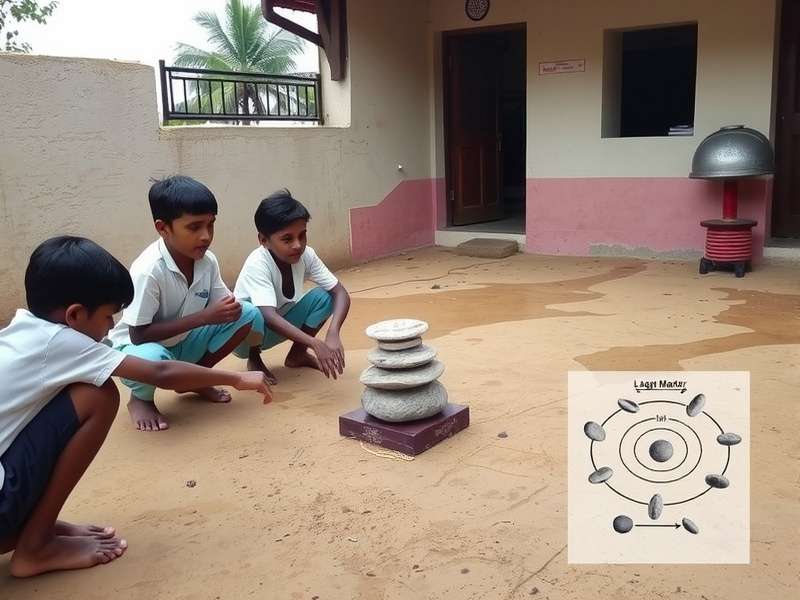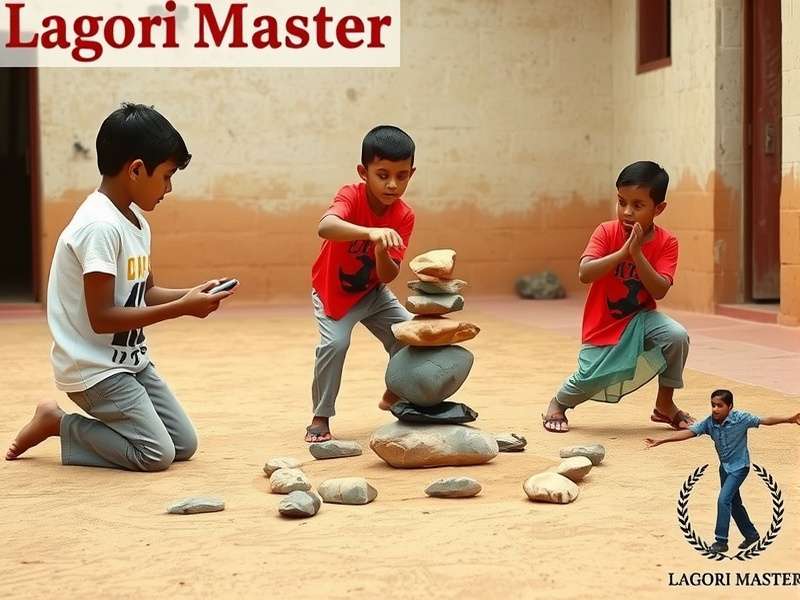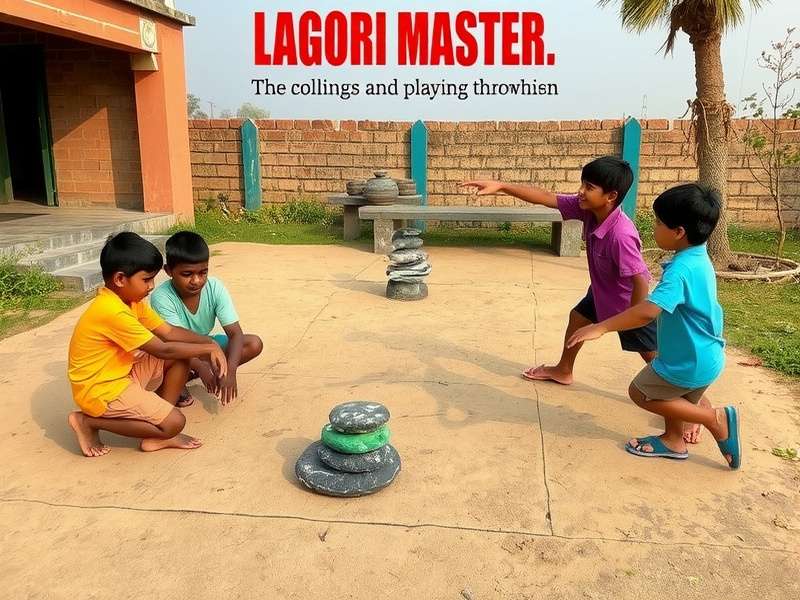Lagori Master: The Ultimate Guide to India's Traditional Throwing Game 🎯
Table of Contents
Quick Facts
Also Known As:Lingorcha, Pittu, Seven Stones
Players:2 teams of 5-7 players each
Equipment:7 flat stones, 1 tennis ball
Playing Time:15-30 minutes per game
Origin:Ancient India
Overview of Lagori Master 🏆
Lagori Masteris a traditional Indian outdoor game that combines elements of throwing, running, and strategy. The game is played with seven flat stones stacked on top of each other and a ball. The primary objective is to knock down the stone pile with the ball and then rebuild it before the opposing team can hit you with the ball.
This exciting game tests players' accuracy, speed, and teamwork. The termLagori Masterrefers to someone who has exceptional skills in playing this game. Across different regions of India, the game is known by various names including Lingorcha, Pittu, and Seven Stones.

The beauty ofLagori Masterlies in its simplicity and the minimal equipment required. All you need is a ball and some flat stones, making it accessible to children across socioeconomic backgrounds. The game promotes physical activity, strategic thinking, and social interaction among players.
Key Insight:Unlike many modern games,Lagori Masterrequires no specialized equipment or playing field. This accessibility has contributed to its enduring popularity across generations in India.
Historical Origins and Evolution 📜
The origins ofLagori Mastercan be traced back to ancient India, with references found in historical texts and folk stories. While the exact timeline is difficult to pinpoint, evidence suggests the game has been played for centuries across the Indian subcontinent.
Historical records indicate that variations of this game were played during the Mughal era and possibly even earlier. The game's simplicity and the use of readily available materials (stones and balls) made it popular among children in both rural and urban settings throughout Indian history.
During the British colonial period,Lagori Mastercontinued to thrive as a popular pastime among Indian children. The game represented a form of cultural resistance, maintaining traditional play patterns despite foreign influences. Post-independence, the game saw a resurgence as part of efforts to preserve Indian cultural heritage.
In recent decades, with urbanization and the rise of digital entertainment, traditional games likeLagori Masterfaced challenges. However, there has been a revival movement promoting traditional Indian games as healthier alternatives to screen-based activities.
Game Rules and Regulations 📋
Basic Setup
To playLagori Master, you need two teams with an equal number of players (typically 5-7 per team). The game requires seven flat stones (each about 2-3 inches in diameter) and a tennis ball or similar-sized rubber ball.
The stones are stacked in a specific formation: three at the bottom, two on top of them, then one, and finally one stone placed vertically on the very top. This creates a stable but knockable structure. The throwing line is marked approximately 20-25 feet away from the stone pile.
Gameplay Procedure
The game begins with a toss to decide which team will bat (throw the ball) first. The batting team's player attempts to knock down the stone pile by throwing the ball. If successful, the batting team must quickly try to rebuild the pile while the fielding team retrieves the ball.
Meanwhile, the fielding team tries to hit the batting team players with the ball before they can rebuild the stone pile. If a player is hit, they are out. The batting team continues until all players are either out or the pile is successfully rebuilt.
If the batting team successfully rebuilds the pile without all players getting out, they score a point and get another chance to bat. If all players are out, the teams switch roles. The team with the highest score after a predetermined number of innings wins the game.

Important Rule:InLagori Master, players cannot be tagged out if they are touching the reconstructed stone pile. This rule adds strategic depth to the game as players can find safe zones.
Equipment and Playing Field Setup 🏟️
The equipment needed forLagori Masteris minimal and easily accessible. The seven stones should be relatively flat and of similar size, typically gathered from riverbeds or open fields. The ideal stone is about 2-3 inches in diameter and 0.5-1 inch thick.
The ball used inLagori Masteris typically a tennis ball or similar-sized rubber ball. The ball should have enough weight to knock over the stone pile but not so heavy as to cause injury if it hits a player. Traditional versions of the game sometimes used balls made of wrapped cloth or rubber.
The playing field can be any open space - a backyard, playground, or empty field. The standard dimensions include a throwing line approximately 20-25 feet from the stone pile. The field should have enough space for players to run and dodge the ball.
For official tournaments ofLagori Master, specific field dimensions may be standardized. However, in casual play, the dimensions are often adjusted based on the available space and the age of the players.
Playing Techniques and Strategies 🎯
Throwing Techniques
Mastering the throw is crucial inLagori Master. Players develop various throwing styles to maximize accuracy and power. The most common technique involves an underarm throw that creates a trajectory ideal for knocking down the stacked stones.
Advanced players ofLagori Masteroften develop specialized throws. The spin throw adds rotation to the ball, making it more likely to topple the stones even with a glancing blow. The bounce throw uses the ground to create an unpredictable trajectory that's harder for the opposing team to anticipate.
Rebuilding Strategies
Once the stones are knocked down, the batting team must work quickly to rebuild the pile. Effective teams develop systems where different players have specific roles - some focus on gathering stones while others position themselves to avoid being tagged.
Communication is key during the rebuilding phase ofLagori Master. Players must coordinate their movements to efficiently reconstruct the pile while keeping an eye on the fielding team's position and the ball's location.
Fielding Tactics
The fielding team inLagori Mastermust employ strategic positioning to effectively tag out the batting team. Common tactics include creating a perimeter around the stone pile and using quick passes to disorient the batting team.
Advanced fielding strategies inLagori Masterinvolve creating decoy movements and fake throws to force batting team players into vulnerable positions. The fielding team must balance aggressive tagging with maintaining control of the playing area.

Regional Variations Across India 🌍
Lagori Masterexhibits fascinating regional variations across India, reflecting the country's cultural diversity. In North India, the game is commonly known as "Saat Patti" or "Seven Stones," while in South India, it's often called "Lingorcha" or "Pittu."
In Maharashtra, the game is known as "Lagori," from which the termLagori Masterderives. The Marathi version often involves specific chants and songs that players recite during the game, adding a cultural dimension to the play experience.
In Tamil Nadu, the game is called "Pittu" and sometimes incorporates additional rules about how players can be tagged. The Kerala version, known as "Ezhu Kallu" (Seven Stones), may use coconut shells instead of stones in coastal areas.
Despite these regional differences, the core mechanics ofLagori Masterremain consistent across India. The universal appeal of knocking down and rebuilding the stone pile transcends linguistic and cultural boundaries.
Cultural Note:The regional names forLagori Masteroften reflect local languages and customs, demonstrating how traditional games adapt to different cultural contexts while maintaining their essential character.
Cultural Significance and Social Impact 🤝
Lagori Masterholds significant cultural value in India, representing more than just a children's game. It embodies values of teamwork, strategy, and physical activity that align with traditional Indian educational philosophies.
The game has been featured in Indian literature, films, and television shows, often depicted as a symbol of childhood innocence and simpler times. These cultural representations have helped preserve the memory ofLagori Mastereven as urbanization changes play patterns.
In many Indian communities,Lagori Mastertournaments are organized during festivals and community gatherings. These events serve as social bonding opportunities and help transmit cultural traditions to younger generations.
The game also promotes gender inclusivity, as both boys and girls traditionally playLagori Mastertogether. This aspect makes it an important tool for promoting social equality and breaking down gender barriers from a young age.
Educational researchers have noted that games likeLagori Masterhelp develop cognitive skills including strategic thinking, spatial awareness, and quick decision-making. These benefits have led to renewed interest in incorporating traditional games into modern educational settings.
Modern Adaptations and Future Prospects 🔮
In recent years, there has been a resurgence of interest in traditional Indian games likeLagori Master. This revival is driven by concerns about children's sedentary lifestyles and the loss of cultural heritage.
Modern adaptations ofLagori Masterinclude organized tournaments, school competitions, and even digital versions that simulate the game experience. These initiatives aim to make the game relevant to contemporary youth while preserving its traditional essence.
Some sports organizations have proposed standardizingLagori Masterrules and equipment to facilitate competitive play at national and international levels. These efforts could potentially lead to the game being included in multi-sport events showcasing traditional games from around the world.
The future ofLagori Masterlooks promising as awareness grows about the benefits of traditional play. With increased institutional support and community engagement, this ancient game could continue to thrive for generations to come.
Future Vision:As interest in cultural preservation and physical activity grows,Lagori Masterhas the potential to evolve from a nostalgic memory to a vibrant part of contemporary Indian life, bridging generations through shared play experiences.
Educational Value
Lagori Masterdevelops multiple skills in children:
- Physical Development:Improves throwing accuracy, running speed, and overall coordination
- Cognitive Skills:Enhances strategic thinking, quick decision-making, and spatial awareness
- Social Skills:Promotes teamwork, communication, and sportsmanship
- Cultural Awareness:Connects children to traditional Indian games and values
In conclusion,Lagori Masterrepresents an important part of India's cultural heritage. This traditional game offers valuable physical, cognitive, and social benefits while providing enjoyable recreation for players of all ages. As efforts to preserve and promote traditional games continue,Lagori Masterstands as a testament to the enduring appeal of simple, skill-based play that has entertained generations of Indian children.